The Majestic Red Fort: A Journey Through History and Architecture
The Red Fort in Delhi, also known as Lal Kila or Lal Qila, is not just an architectural marvel but also a witness to some of the most crucial events in Indian history. This iconic structure, also referred to as Qila-e-Mubarak (the blessed fort), stands as a testament to the grandeur of the Mughal era.

Red Fort History
Built by the fifth Mughal emperor Shah Jahan in 1648, the Lal Kila was the palace fort of Shahjahanabad – the king’s new capital, also known as Old Delhi. The Red Fort of Delhi is inspired by the Red Fort in Agra, constructed by Shah Jahan’s grandfather, Akbar the Great. Spread over 49.1815 hectares (256 acres), the Delhi Red Fort Complex also includes the adjacent older fort – the Salimgarh, built by Islam Shah Suri in 1546. This massive walled structure took nearly a decade to complete, with Ustad Hamid and Ustad Ahmad of Shah Jahan’s court starting the construction in 1638 and completing it in 1648.
Built on the banks of the Yamuna river, whose waters fed the moats surrounding the fort, the octagonal-shaped Lal Qila remained the Mughal Empire’s seat for around 200 years before the British took over.
Lal Kila Architecture

The Red Fort of Delhi represents the brilliance of Mughal architecture, mixed with various local building traditions such as Persian, Timurid, and Hindu architecture. The Lal Kila has influenced the architecture of key monuments in Delhi, Rajasthan, and Uttar Pradesh, built after it.
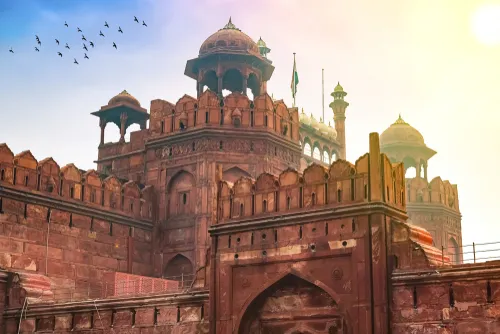
Within the fort’s grounds, which are surrounded by 75-ft-high red sandstone walls, are palaces, private chambers of the royal queens, entertainment halls, royal dining areas, projecting balconies, baths, indoor canals (including Nahr-i-Bihisht or stream of paradise), gardens, and a mosque. The most prominent structures within the complex include Diwan-e-Aam and Diwan-e-Khas, a typical feature found across most Mughal-era buildings.
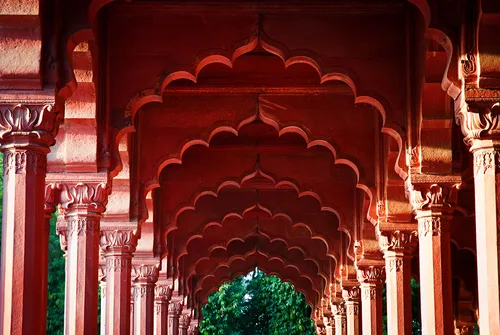
The building has two main entry points – the Lahori Gate and the Delhi Gate. While the Lahori Gate is the main entrance to the fort, the Delhi Gate is the public entrance at the southern end of the building.
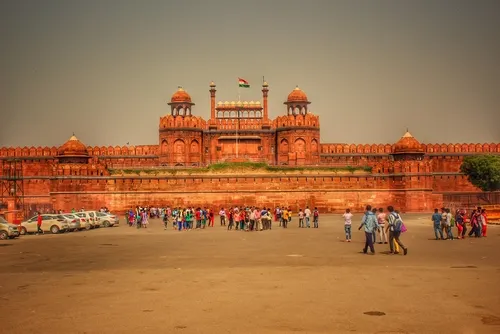
What Lies Within the Lal Kila Delhi?
- Moti Masjid
- Hayat Baksh Bagh
- Chatta Chowk
- Mumtaz Mahal
- Rang Mahal
- Khas Mahal
- Diwan-i-Aam
- Diwan-i-Khas
- Hira Mahal
- Princes’ quarters
- Tea House
- Naubat Khana
- Nahr-i-Bihisht
- Hammam
- Baoli
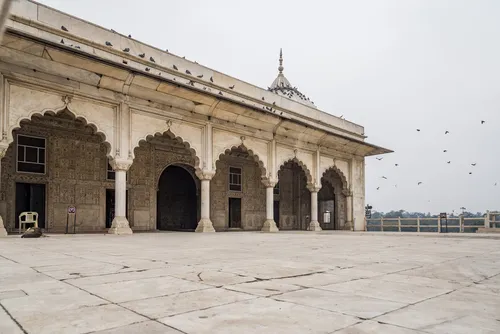
Red Fort: A World Heritage Site

Designated a UNESCO World Heritage site in 2007, the Lal Qila, which has also been declared a monument of national importance under the Ancient Monument and Archaeological Sites and Remains Act, 1959, is managed by the Archaeological Survey of India. The Lal Kila, Delhi, now has museums that display a large variety of historical artifacts. These include the Subhash Chandra Bose Museum, the Museum of 1857, Yaad-e-Jallian, Drishyakala, and Azadi Ke Deewane.

Key Facts About Red Fort of Delhi
Red Fort Flag Hoisting on Independence Day
The prime minister of India unfurls the national flag at the Red Fort every year on Independence Day. This tradition has been followed since India attained independence from the British on August 15, 1947.
Lal Kila Original Name
The original name of the building was Quila-e-Mubarak. The British gave the name Red Fort after its massive red sandstone walls, while the locals translated that as Lal Quila for the same reason.
Red Fort Original Colour
Since Delhi did not have an ample supply of red sandstone, the Red Fort was originally made of limestone. Due to depreciation over time, the structure was painted red by the British at a later stage.
Red Fort: Trial Place of the Last Mughal
The British tried the last Mughal emperor Bahadur Shah Zafar at the Lal Kila over charges of treason, after which he was sent to Rangoon, now Myanmar.
Red Fort Light and Sound Show
The Lal Kila hosts a 60-minute light and sound show that takes visitors through the history of the monument. You can book the show online or buy tickets from the booths at the fort. While the timing may vary depending on the season, the show is in Hindi between 7:30 pm and 8:30 pm and in English between 9:00 pm and 10:00 pm.
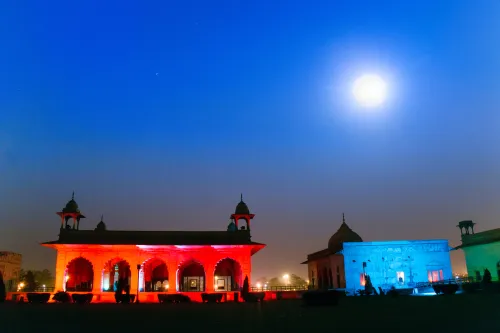
Red Fort Features on Rs 500 Note
The Lal Kila is featured on the back of the new Rs 500 currency note.
Red Fort Timings
- Visiting hours: 7:00 AM – 5:30 PM
- Days open for visiting: Tuesday to Sunday
- Weekly holiday: Monday
- Time required for a full tour: 2-3 hours
- Red Fort entry fee: No fee for children below 15 years; Rs 10 for Indian nationals, citizens of SAARC and BIMSTEC nations; Rs 250 for foreign nationals.
- Best time to visit: November to February
- Nearest Metro Stations: Lal Quila (Violet Line), Chandni Chowk (Yellow Line)
- Red Fort light and sound show tickets: Weekdays: Rs 60 for adults and Rs 20 for children; Weekends and public holidays: Rs 80 for adults and Rs 30 for children.
Views of Delhi’s Majestic Red Fort

The Pink Interior of the Red Fort in Delhi
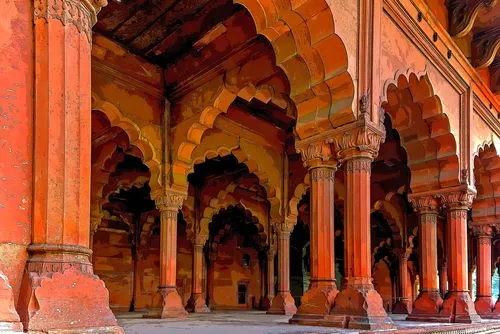
Diwan-e-Khas at the Lal Qila in Delhi
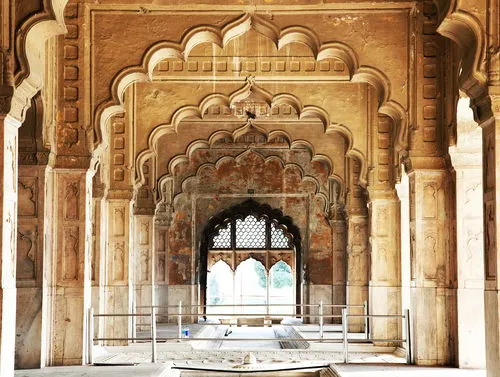
Lahori Gate of the Lal Qila in Delhi

View from the Bottom of the Lal Qila in Delhi
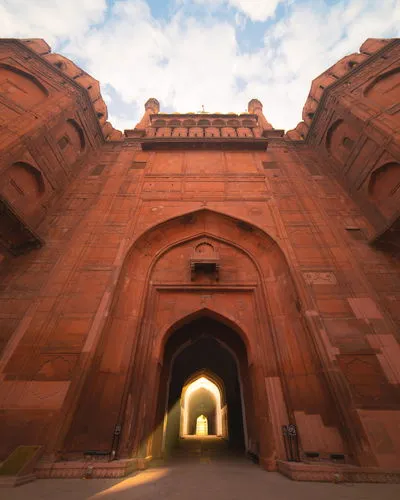
View Inside Delhi Red Fort
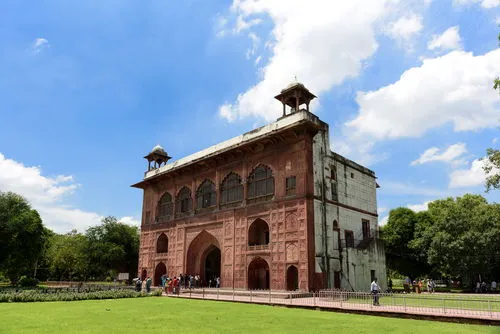
How to Reach Red Fort Delhi?
Old Delhi Railway Station
The station is at a 2.3 km distance from the Red Fort in Delhi.
ISBT Kashmiri Gate
The ISBT Kashmiri Gate is 2.7 km from the Red Fort in Delhi.
Red Fort Delhi Nearest Metro Station
The Lal Qila Metro Station is the nearest metro station from the iconic building. Part of the Delhi Metro Violet Line, the Lal Qila Metro Station is 0.3 km from the Red Fort. Exit from gate No 4 to reach the Red Fort from this station.

Conclusion
The Red Fort, or Lal Kila, is more than just a historical monument; it is a symbol of India’s rich cultural heritage and architectural brilliance. From its grand history to its intricate architecture, the Red Fort continues to captivate visitors from around the world. Whether you’re a history buff, an architecture enthusiast, or simply a curious traveler, a visit to the Red Fort is a journey through time that you won’t want to miss.
